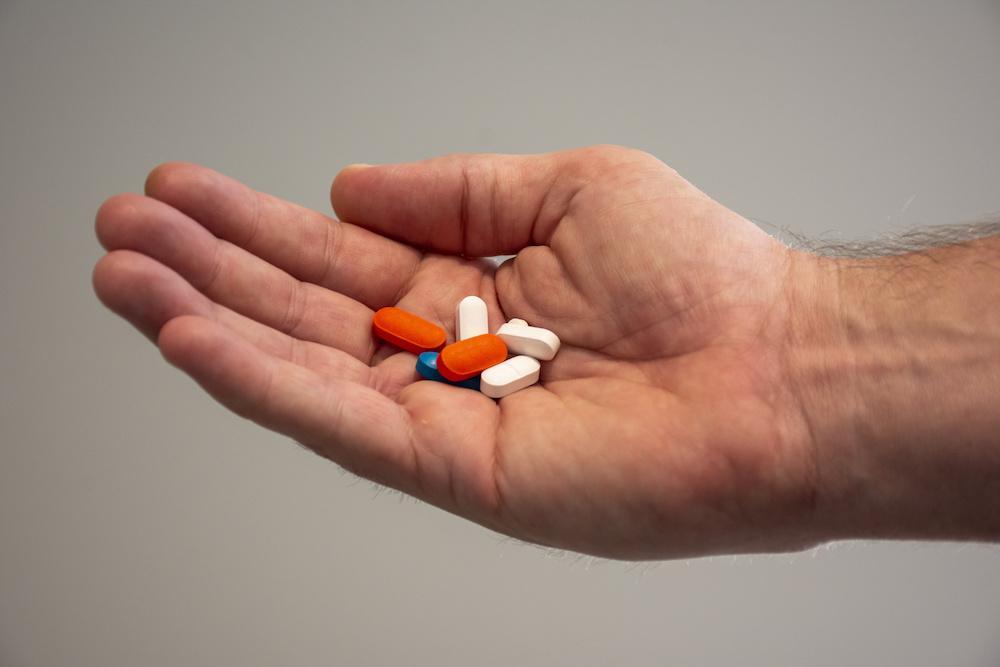The opioid crisis has become one of the most pressing public health challenges in recent decades, affecting millions of individuals and families across the globe. As the opioid epidemic has intensified, the need for effective treatment options has grown significantly. One of the key strategies in combating opioid addiction is medication-assisted treatment (MAT), with Suboxone clinic at the forefront of these efforts. These clinics provide individuals struggling with opioid dependence access to Suboxone, a medication that helps reduce withdrawal symptoms and cravings, while also offering counseling and other forms of support. In this article, we will delve into the function, importance, and benefits of Suboxone clinics, as well as the challenges they face in treating opioid addiction.
What Is Suboxone?
Suboxone is a prescription medication used to treat opioid addiction. It is a combination of two active ingredients: buprenorphine and naloxone. These two components work together to reduce the symptoms of opioid withdrawal and curb cravings for drugs like heroin, prescription opioids, and fentanyl.
- Buprenorphine: A partial opioid agonist, buprenorphine binds to the same receptors in the brain that opioids target but does so in a way that produces less intense effects. It helps to alleviate withdrawal symptoms and cravings without causing the “high” that individuals get from opioids, making it easier for them to transition away from illicit drug use.
- Naloxone: Naloxone is an opioid antagonist, meaning it blocks the effects of opioids. Its inclusion in Suboxone prevents misuse by injection, as it can trigger withdrawal symptoms if the medication is tampered with or taken inappropriately.
Together, these two drugs form a powerful tool in the battle against opioid addiction, making Suboxone clinics an essential resource for those seeking recovery.
What Is a Suboxone Clinic?
A Suboxone clinic is a specialized healthcare facility that provides treatment for individuals struggling with opioid addiction. These clinics are licensed to prescribe Suboxone as part of a comprehensive treatment plan, often referred to as medication-assisted treatment (MAT). MAT involves a combination of medication and behavioral therapy to address the physical, psychological, and emotional aspects of addiction.
In addition to prescribing and monitoring Suboxone use, Suboxone clinics may offer a range of services to support recovery, including:
- Initial assessment and diagnosis: Evaluating the severity of opioid dependence and other underlying conditions.
- Personalized treatment plans: Creating individualized recovery plans based on the patient’s medical history, addiction severity, and recovery goals.
- Counseling and therapy: Offering behavioral counseling, cognitive-behavioral therapy (CBT), and other forms of psychotherapy to address the emotional and mental health components of addiction.
- Monitoring and follow-up: Regular check-ups to monitor the patient’s progress, adjust medication dosage, and provide ongoing support.
Suboxone clinics aim to provide a holistic approach to treating opioid addiction, recognizing that medication alone is not enough to ensure long-term recovery. By combining medication with counseling and support, these clinics offer a more comprehensive path to recovery.
How Suboxone Clinics Operate
The Initial Intake and Evaluation Process
The first step in receiving treatment at a Suboxone clinic is the intake process, where patients undergo a thorough medical and psychological evaluation. This process typically includes:
- Medical history review: Physicians assess the patient’s health, past substance use, and any other conditions, such as mental health disorders, that may influence the treatment.
- Physical examination: To determine the patient’s physical condition and ensure they are suitable for Suboxone treatment.
- Psychosocial evaluation: This includes assessing the patient’s social and environmental factors, such as family dynamics, employment, and living situation, which may impact their recovery journey.
Based on these assessments, the physician will determine whether Suboxone is an appropriate option and will develop a personalized treatment plan.
Induction Phase
After the evaluation, patients typically begin the induction phase of treatment. This involves starting the patient on Suboxone under medical supervision to ensure that the medication is well-tolerated and effective. It is crucial that the patient be in a mild-to-moderate state of opioid withdrawal before taking Suboxone, as taking the medication too early can precipitate more severe withdrawal symptoms.
During the induction phase, healthcare providers monitor the patient’s response to the medication closely, adjusting the dosage as necessary to alleviate withdrawal symptoms and reduce cravings without causing excessive sedation or other side effects.
Stabilization and Maintenance Phase
Once the optimal dose is identified, patients move into the stabilization phase, where the goal is to find a maintenance dose that keeps withdrawal symptoms and cravings at bay while allowing the patient to function normally in daily life. During this period, patients may have regular follow-up appointments to ensure they are adhering to their medication plan and to adjust their dose if necessary.
The maintenance phase can last for months or even years, depending on the individual’s progress and recovery goals. During this phase, Suboxone helps patients maintain their sobriety by reducing their cravings for opioids, allowing them to focus on the psychological and social aspects of their recovery. Counseling and therapy play an integral role in this phase, helping patients address the underlying causes of their addiction and develop healthier coping mechanisms.
Tapering and Discontinuation (If Applicable)
Not all individuals will choose to stay on Suboxone indefinitely. In some cases, patients may wish to gradually taper off the medication once they feel stable in their recovery. Tapering should be done under medical supervision to avoid withdrawal symptoms and minimize the risk of relapse.
Some patients, however, may require long-term maintenance therapy, particularly if they have a history of relapse or if the risk of returning to opioid use remains high. The decision to taper or continue Suboxone is made collaboratively between the patient and their healthcare provider.
The Benefits of Suboxone Clinics in Treating Opioid Addiction
1. Effectiveness in Reducing Cravings and Withdrawal Symptoms
One of the most significant advantages of Suboxone is its effectiveness in managing the withdrawal symptoms and intense cravings that often lead to relapse in individuals attempting to quit opioids. Suboxone stabilizes the brain’s chemistry, reducing the physical and psychological distress that can make recovery difficult. This allows individuals to focus on rebuilding their lives without the constant fear of withdrawal or cravings driving them back to drug use.
2. Improved Retention in Treatment Programs
Suboxone clinics help patients stay engaged in their treatment programs for longer periods. Research shows that individuals receiving medication-assisted treatment (MAT) with Suboxone are more likely to remain in treatment than those who rely solely on counseling or abstinence-based programs. This improved retention is crucial, as longer engagement in treatment is associated with better long-term recovery outcomes.
3. Decreased Risk of Overdose
Patients who use Suboxone are less likely to overdose on opioids than those who attempt to quit opioids without medication. Suboxone acts as a safety net, reducing the risk of relapse, which is often accompanied by a lowered tolerance to opioids and an increased likelihood of overdose. Additionally, because Suboxone contains naloxone, it can block the effects of other opioids, offering an added layer of protection against overdose.
4. Holistic Approach to Recovery
Suboxone clinics typically offer more than just medication. They integrate counseling, therapy, and support services into the treatment plan, providing a comprehensive approach to recovery. This holistic model addresses the physical, psychological, and social aspects of addiction, increasing the chances of sustained recovery.
Therapeutic interventions at Suboxone clinics may include:
- Individual therapy: Patients work one-on-one with a counselor to address the emotional and psychological factors driving their addiction.
- Group therapy: Group sessions offer a supportive environment where individuals can share their experiences and learn from others in recovery.
- Family therapy: Involving family members in the recovery process can strengthen relationships and provide a supportive network for the individual in treatment.
- Support groups: Clinics often connect patients with 12-step programs or other peer support groups to maintain sobriety outside of formal treatment.
5. Improved Quality of Life
By stabilizing the individual’s condition and providing the necessary tools to manage addiction, Suboxone clinics can significantly improve a person’s overall quality of life. With cravings under control and withdrawal symptoms managed, individuals can regain control of their lives, return to work, rebuild relationships, and reintegrate into society. Long-term recovery becomes more attainable as patients develop the skills and confidence they need to stay sober.
6. Flexible and Accessible Treatment Options
Many Suboxone clinics offer flexible scheduling options, making it easier for patients to access treatment without disrupting their work or personal responsibilities. Additionally, telemedicine options have become increasingly popular, allowing patients to receive consultations and follow-up care remotely. This has expanded access to treatment, especially for individuals living in rural or underserved areas where addiction services may be limited.
Challenges Faced by Suboxone Clinics
While Suboxone clinics offer numerous benefits, they also face several challenges in delivering care to individuals struggling with opioid addiction.
1. Stigma Surrounding Medication-Assisted Treatment
Despite the proven effectiveness of Suboxone and other MAT options, there is still a significant amount of stigma associated with using medications to treat addiction. Some people view MAT as merely substituting one drug for another, and they may believe that “true” recovery requires complete abstinence from all substances. This stigma can prevent individuals from seeking help at Suboxone clinics or lead to feelings of shame and isolation for those in treatment.
Educating the public and healthcare professionals about the science behind MAT and its role in recovery is crucial in reducing this stigma and encouraging more people to seek help.
2. Limited Access to Clinics
While Suboxone clinics are becoming more widely available, access to these clinics can still be limited, particularly in rural or underserved areas. Many individuals struggling with opioid addiction do not live near a clinic or lack transportation to receive regular treatment. Telemedicine has helped to address some of these barriers, but not all patients have access to the necessary technology or feel comfortable using virtual platforms for their care.
3. Regulatory Hurdles
The regulation of Suboxone and other MAT medications can be complex. Prescribers must undergo special training and obtain waivers to prescribe Suboxone, and clinics are subject to stringent regulations that can limit their capacity to treat large numbers of patients. These regulatory hurdles can make it difficult for clinics to expand their services and reach more people in need.
4. Risk of Misuse and Diversion
Although Suboxone is designed to reduce the risk of misuse, there is still a potential for the medication to be misused or diverted for illicit purposes. Clinics must implement strict monitoring protocols, such as urine drug screenings and pill counts, to ensure that patients are using the medication as prescribed. These measures can add complexity to the treatment process, but they are essential for maintaining the safety and integrity of the program.
Conclusion
Suboxone clinics play a critical role in the fight against opioid addiction, offering individuals access to life-saving medication and comprehensive support services. By reducing withdrawal symptoms and cravings, Suboxone helps individuals manage their addiction and work toward long-term recovery. These clinics provide a holistic approach to treatment, addressing the physical, emotional, and social aspects of addiction, while also improving patients’ quality of life.
Despite facing challenges such as stigma, limited access, and regulatory barriers, Suboxone clinics remain a vital resource in the battle against the opioid epidemic. As awareness of their benefits continues to grow and access to treatment improves, these clinics have the potential to help more individuals reclaim their lives from addiction and build healthier, more fulfilling future
Stay in touch to get more news & updates on Gossips.Blog!




